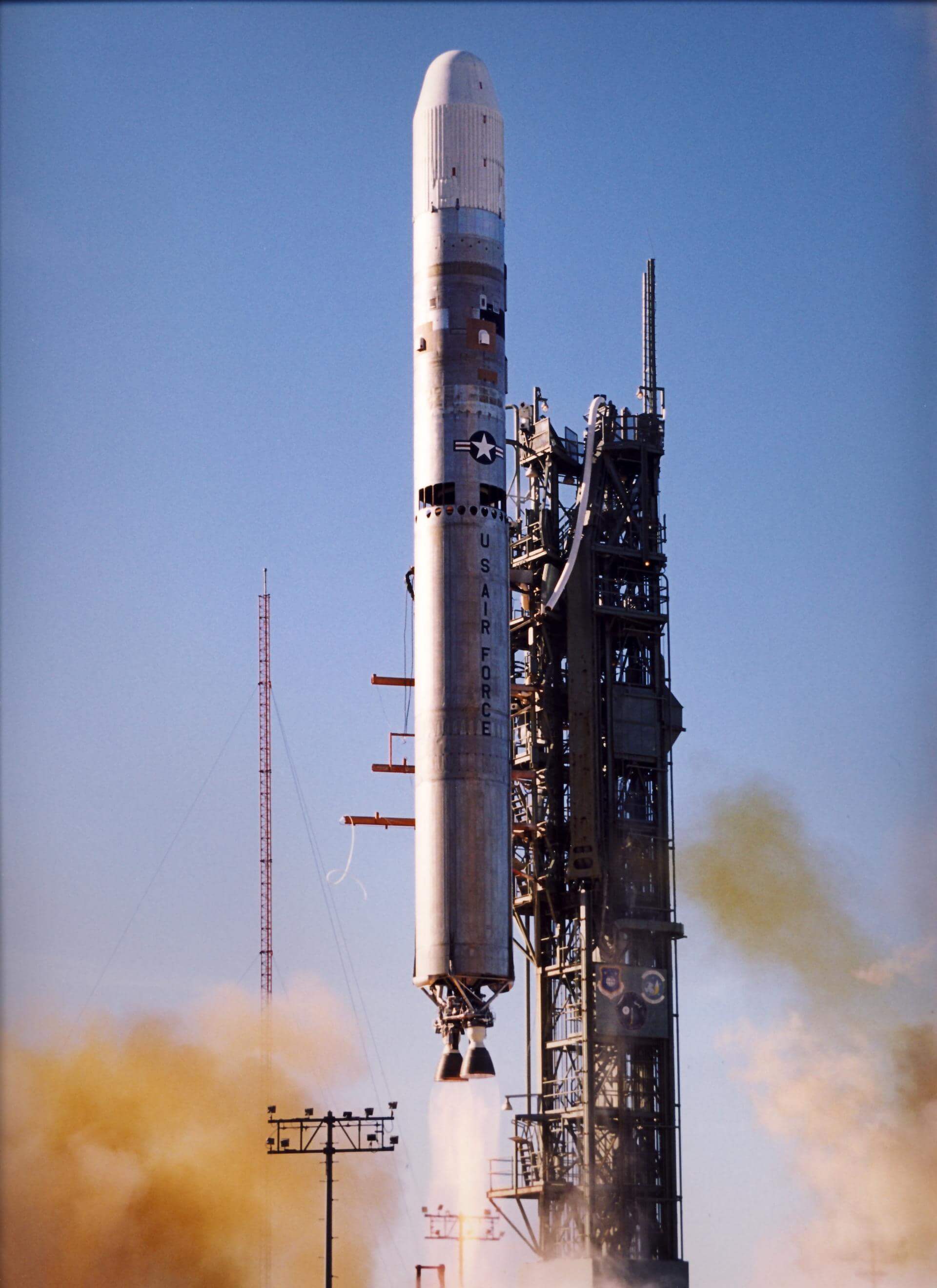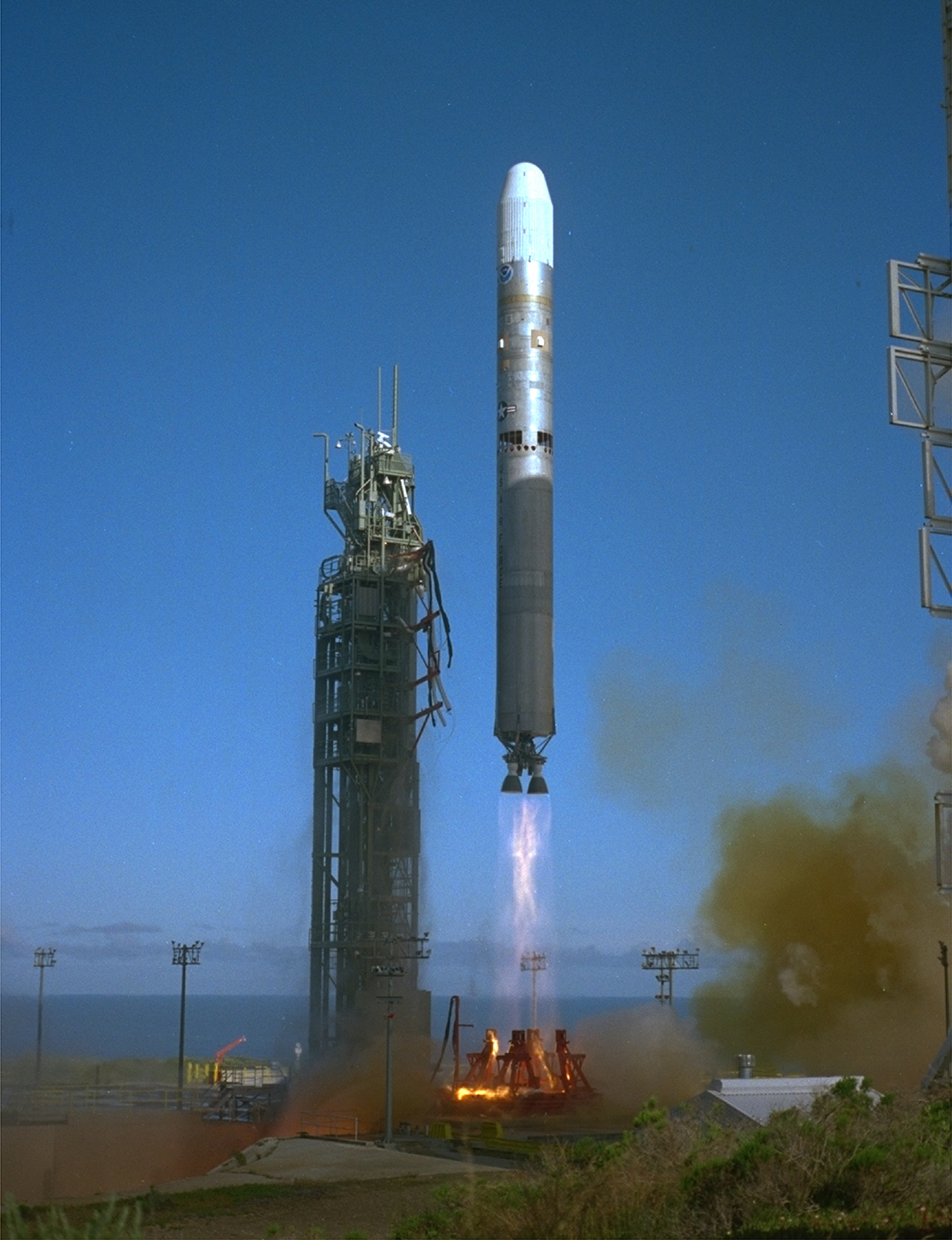
Titan II SLV
In-activeLockheed Martin (LMT)
Sept. 5, 1988
Description
The Titan 23G, Titan II(23)G, Titan 2(23)G or Titan II SLV was an American expendable launch system derived from the LGM-25C Titan II intercontinental ballistic missile. Retired Titan II missiles were converted by Martin Marietta, into which the Glenn L. Martin Company, which built the original Titan II, had merged. It was used to carry payloads for the United States Air Force, NASA and NOAA. Thirteen were launched from Space Launch Complex 4W at the Vandenberg Air Force Base between 1988 and 2003.
Specifications
-
Minimum Stage
2 -
Max Stage
3 -
Length
31.4 m -
Diameter
3.05 m -
Fairing Diameter
3.05 m -
Launch Mass
117.0 T -
Thrust
1900.0 kN
Family
-
Name
Titan II SLV -
Family
― -
Variant
23G -
Alias
― -
Full Name
Titan II SLV
Payload Capacity
-
Launch Cost
― -
Low Earth Orbit
3600.0 kg -
Geostationary Transfer
Orbit
― -
Direct Geostationary
― -
Sun-Synchronous Capacity
―
Lockheed Martin
Commercial
None
LMT 1953Lockheed Martin's Space Division started in the production of missiles and later ICBM's in the 1950s. Their TITAN missile system was used for 12 Gemini spacecraft and the Voyager probes. They have worked largely in collaboration with NASA on many of their probes, landers, and spacecraft, and hope to play a key role in NASA's return to the moon in 2024.
Titan II SLV | DMSP F-16
Lockheed Martin | United States of AmericaVandenberg SFB, CA, USA
Oct. 18, 2003, 4:17 p.m.
Titan II SLV | Coriolis
Lockheed Martin | United States of AmericaVandenberg SFB, CA, USA
Jan. 6, 2003, 2:19 p.m.
Status: Launch Successful
Mission:
The Coriolis / Windsat / SMEI three-year mission will provide Defense Department and National Oceanic and Atmospheric Administration (NOAA) weather data users with important ocean wind and solar wind measurements -- improving forecasting around the globe while building important knowledge that will be used in developing the next generation of Polar-orbiting environmental satellites.
Sun-Synchronous OrbitTitan II SLV | NOAA 17
Lockheed Martin | United States of AmericaVandenberg SFB, CA, USA
June 24, 2002, 6:23 p.m.
Titan II SLV | NOAA 16
Lockheed Martin | United States of AmericaVandenberg SFB, CA, USA
Sept. 21, 2000, 10:22 a.m.
Status: Launch Successful
Mission:
The NOAA K, L and M POES satellites begin the fifth generation of improved environmental monitoring in support of NOAA missions. The instrument payload has significant improvements and additions/deletions. The instrument changes have effected the spacecraft subsystems and data formats.
Sun-Synchronous OrbitTitan II SLV | DMSP F-15
Lockheed Martin | United States of AmericaVandenberg SFB, CA, USA
Dec. 12, 1999, 5:38 p.m.
Titan II SLV | QuikScat
Lockheed Martin | United States of AmericaVandenberg SFB, CA, USA
June 20, 1999, 2:15 a.m.
Status: Launch Successful
Mission:
The SeaWinds instrument on the QuikScat (Quick Scatterometer) mission is a "quick recovery" mission to fill the gap created by the loss of data from the NASA Scatterometer (NSCAT), when the ADEOS 1 host satellite lost power in June 1997. The SeaWinds instrument is a specialized microwave radar that measures near-surface wind speed and direction under all weather and cloud conditions over the Earth's oceans.
Polar OrbitTitan II SLV | NOAA 15
Lockheed Martin | United States of AmericaVandenberg SFB, CA, USA
May 13, 1998, 3:52 p.m.
Status: Launch Successful
Mission:
The NOAA K, L and M POES satellites begin the fifth generation of improved environmental monitoring in support of NOAA missions. The instrument payload has significant improvements and additions/deletions. The instrument changes have effected the spacecraft subsystems and data formats.
Sun-Synchronous OrbitTitan II SLV | DMSP-5D2 F14
Lockheed Martin | United States of AmericaVandenberg SFB, CA, USA
April 4, 1997, 4:47 p.m.
Titan II SLV | Clementine 1
Lockheed Martin | United States of AmericaVandenberg SFB, CA, USA
Jan. 25, 1994, 4:34 p.m.
Status: Launch Successful
Mission:
The DSPSE (Deep Space Program Science Experiment), the first of a series of Clementine technology demonstrations jointly sponsored by the Ballistic Missile Defense Organization (BMDO) and the National Aeronautics and Space Administration (NASA), launched in early 1994. Its principal objective is to space qualify lightweight imaging sensors and component technologies for the next generation of Department of Defense (DoD) spacecraft. The Clementine mission uses the Moon, a near-Earth asteroid (1620 Geographos), and the spacecraft's Interstage Adapter (ISA) as targets to demonstrate lightweight component and sensor performance.
Lunar OrbitTitan II SLV | Landsat 6
Lockheed Martin | United States of AmericaVandenberg SFB, CA, USA
Oct. 5, 1993, 5:56 p.m.
Status: Launch Failure
Mission:
The Landsat 6 satellite was a commercial program jointly with the Department of Commerce (NOAA) and EOSAT Company that provided data for a wide range of Earth resources applications including environmental monitoring, natural resource exploration, urban planning, and cartography. The Landsat 6 satellite continued the series of operational Earth resource monitoring spacecraft begun with Landsat 1 in 1972.
Low Earth OrbitTitan II SLV | P-11 5105
Lockheed Martin | United States of AmericaVandenberg SFB, CA, USA
April 25, 1992, 8:53 a.m.
Titan II SLV | P-11 5104
Lockheed Martin | United States of AmericaVandenberg SFB, CA, USA
Sept. 6, 1989, 1:48 a.m.
Electron
Don't Be Such A Square (STP-S30)
Rocket Lab Launch Complex 2 (Launch Area 0 C) - Wallops Flight Facility, Virginia, USASTP-S30 is a complex mission that will deliver research experiments and technology demonstrations to orbit for the DoD and contribute to future space…
Falcon 9
Starlink Group 15-13
Space Launch Complex 4E - Vandenberg SFB, CA, USAA batch of 27 satellites for the Starlink mega-constellation - SpaceX's project for space-based Internet communication system.
Falcon 9
Starlink Group 6-99
Launch Complex 39A - Kennedy Space Center, FL, USAA batch of 29 satellites for the Starlink mega-constellation - SpaceX's project for space-based Internet communication system.
Ariane 62
Galileo L14 (FOC FM33 & FM34)
Ariane Launch Area 4 - Guiana Space Centre, French GuianaPayload consists of two satellites for Europe's Galileo navigation system.
Atlas V 551
Amazon Leo (LA-04)
Space Launch Complex 41 - Cape Canaveral SFS, FL, USAAmazon Leo, formerly known as Project Kuiper, is a mega constellation of satellites in Low Earth Orbit that will offer broadband internet access, thi…


